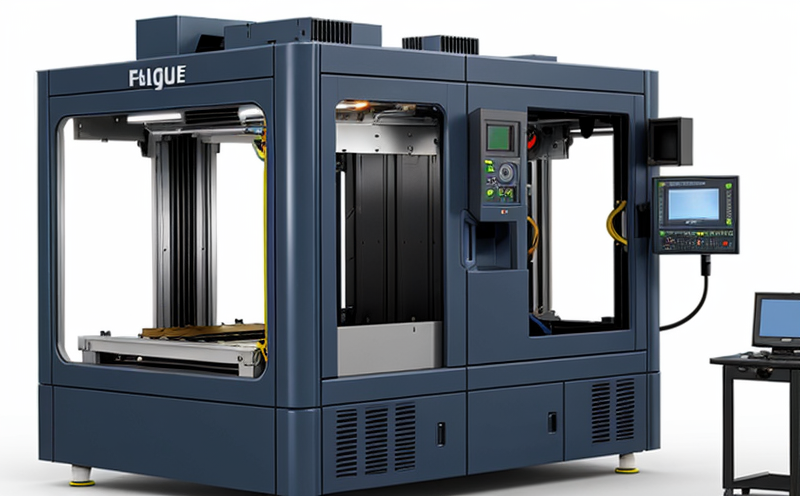ASTM E739 Statistical Analysis of Fatigue Life Data
The ASTM E739 standard provides a robust framework to perform statistical analysis on fatigue life data from additive manufacturing (AM) and 3D printed components. This service is essential for ensuring the reliability, quality, and safety of AM parts used in various industries such as aerospace, automotive, and medical devices.
Understanding the fatigue behavior of these materials is critical because they can be subjected to cyclic loading during operation. ASTM E739 allows engineers to determine the fatigue life of a material by analyzing the stress-strain curves obtained from tensile or fatigue tests. This process involves collecting data points that represent the number of cycles-to-failure at different stress levels.
The methodology outlined in ASTM E739 is particularly useful when dealing with materials that exhibit non-linear behavior under cyclic loading, such as those used in AM processes like laser powder bed fusion (LPBF) or electron beam melting (EBM). By applying this standard, labs can provide accurate and reproducible fatigue life data which helps manufacturers make informed decisions about the design and certification of components.
One key aspect of ASTM E739 is its emphasis on statistical analysis. This includes determining confidence intervals for the estimated fatigue limit stress (SFL) or endurance limit (N50). The service also involves fitting probability distributions to the collected data, such as Weibull distribution, which helps predict the reliability and performance of components over their intended lifetimes.
Another important feature is the consideration of environmental factors that may influence fatigue life. For instance, if a component will be exposed to high temperatures during use, this information must be factored into the analysis. Similarly, any changes in processing parameters like laser power or scanning speed should also be accounted for when interpreting the results.
Quality managers and compliance officers can benefit from this service by ensuring that their products meet stringent regulatory requirements set forth by bodies such as ASTM International. R&D engineers find it invaluable as they work towards optimizing material properties and improving the durability of new designs. Procurement teams use these insights to select suppliers who consistently deliver high-quality materials.
In summary, implementing ASTM E739 ensures that manufacturers have reliable fatigue life data for their AM products, which is crucial for maintaining safety standards across multiple sectors.
Scope and Methodology
- Data Collection: Gather stress-strain curves from tensile or fatigue tests conducted on samples of the AM material.
- Analysis: Use statistical methods to analyze the collected data, including determining confidence intervals for SFL or N50 values.
- Distribution Fitting: Fit probability distributions like Weibull distribution to model the fatigue behavior of materials accurately.
The scope covers all aspects involved in performing ASTM E739 compliant tests, from sample preparation through to final report generation. This ensures that every step aligns with international standards and best practices, providing accurate and consistent results.
Benefits
The primary benefit of using ASTM E739 for fatigue life analysis lies in its ability to provide precise and reliable data on the durability of AM components. This information is invaluable for ensuring that products meet or exceed industry standards, thereby enhancing trust among customers and regulators.
From a technical perspective, this service helps identify any weaknesses within the material structure before they become critical issues during operation. It also allows manufacturers to optimize their processes by understanding how different variables affect fatigue life. For example, knowing exactly which processing parameters lead to longer-lasting parts can significantly reduce waste and improve overall efficiency.
Compliance with ASTM E739 is particularly important for companies operating in competitive markets where reputation and safety are paramount considerations. By adhering to this standard, businesses demonstrate their commitment to quality control and continuous improvement, which fosters long-term relationships with partners and customers alike.
International Acceptance and Recognition
- The United States: ASTM E739 is widely accepted and used by manufacturers across various industries including aerospace, automotive, and medical devices.
- Europe: The European Committee for Standardization (CEN) recognizes ASTM standards like E739 due to their rigorous quality assurance processes.
- Asia-Pacific: Countries such as Japan and China have adopted ASTM E739 into national testing protocols, reflecting its global relevance.
The widespread adoption of ASTM E739 across different regions underscores its importance in the AM community. Its acceptance by major international standards organizations further cements its position as a leading practice for fatigue life analysis.





